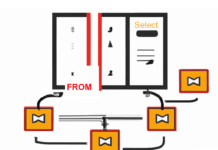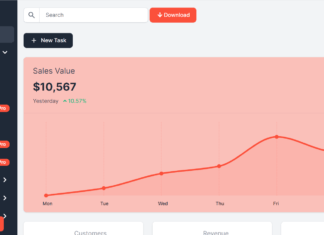
Sponsored Post: During the deployment phase of a website it’s interesting to have a global approach to monitor the website’s performance before launch it online and help you to decide about the optimal hardware for your first launch. At this level came WAPT a load and stress testing tool for websites and web-based applications. While Unit testing can help you making your code more bug free and stable, user-based stress tests will provide you the best way to simulate real users conditions on your website and possibly help you catching gaps if any.

WAPT application
The application compared to what it provide is very small, just 2Mo ! Available only for Windows 98/ME/NT/2000/XP and is able to support up to 2000 simultaneously users with a very basic configuration Intel Pentium IV 2.4 GHz PC, 512MB RAM. You can start by getting the demo and test it for 30 days, fully functional with the only limitation of 20 concurrent virtual users.
WAPT interface
WAPT interface is very well designed so you can understand easily from where to start at first test. You can find yourself very familiar with the application thanks to its Getting started guide which explain the concept of WAPT and how to use it. I have find everything inside it !
Creating Scenario
To get started you should create a test scenario that define the different test conditions such users and duration. Testing scenarios depend on your testing objectives :
- Capacity/Overall Performance
- Performance Characteristics
- Stress Capabilities
- Reliability/Endurance
- Real User Experience/Background Testing
- Scalability/Benchmarking
Each case is explained in the application and you can have more options to change for each objective to fit with your testing needs.
Creating Profiles
After you have created your scenario, you can create your different profiles based on which you simulate the user sessions. Every profile have its own properties from name, iterations, user think time, in addition to advanced properties such simulated user connection speed, load images, keep alive, ignore errors, authentication, IP spoofing, cookies, headers …

Then you start recording the browsing scenario of the profile, and for better real life simulation, virtual user sessions are divided into three different parts and each part represents a set of user actions. That’s why you’ll find in the application initial actions, main actions and final actions, and WAPT allow you also to drag and drop requests between the different situations.
Tests and Results
After preparing your tests scenarios you can simply start running your tests and exploring results. Intermediate results are available during runtime and final results will be available at the end of the test run.

You can explore results directly from the application or export html only, images only or both formats. You can find a large sets of reports depending on your testing objectives which include lot of information from the very basic to the very advanced performance reports.
And of course a graph will be much better to understand the results, and you can find the overall performance, the errors, the average bandwidth and the average response time.
Results could be also exported to CSV to create your custom graphs and explore with more details the different failure or bottlenecks of your web applications.

Conclusion
Overall, WAPT is a best of in its category, to add it to your toolbox. It fit very well with small, medium and large projects, anytime you want to perform advanced tests to your applications. HTTP requests can include parameters that are specific for each user, which make it very flexible to test dynamic web applications, in addition to the possibility to test HTTPS/SSL content. The only issue I have found is that WAPT currently don’t support XMLHTTPRequest for AJAX based applications.
WAPT is available from $350 per license to $210, you can read more about the software pricing
more information and download : http://www.loadtestingtool.com/

























